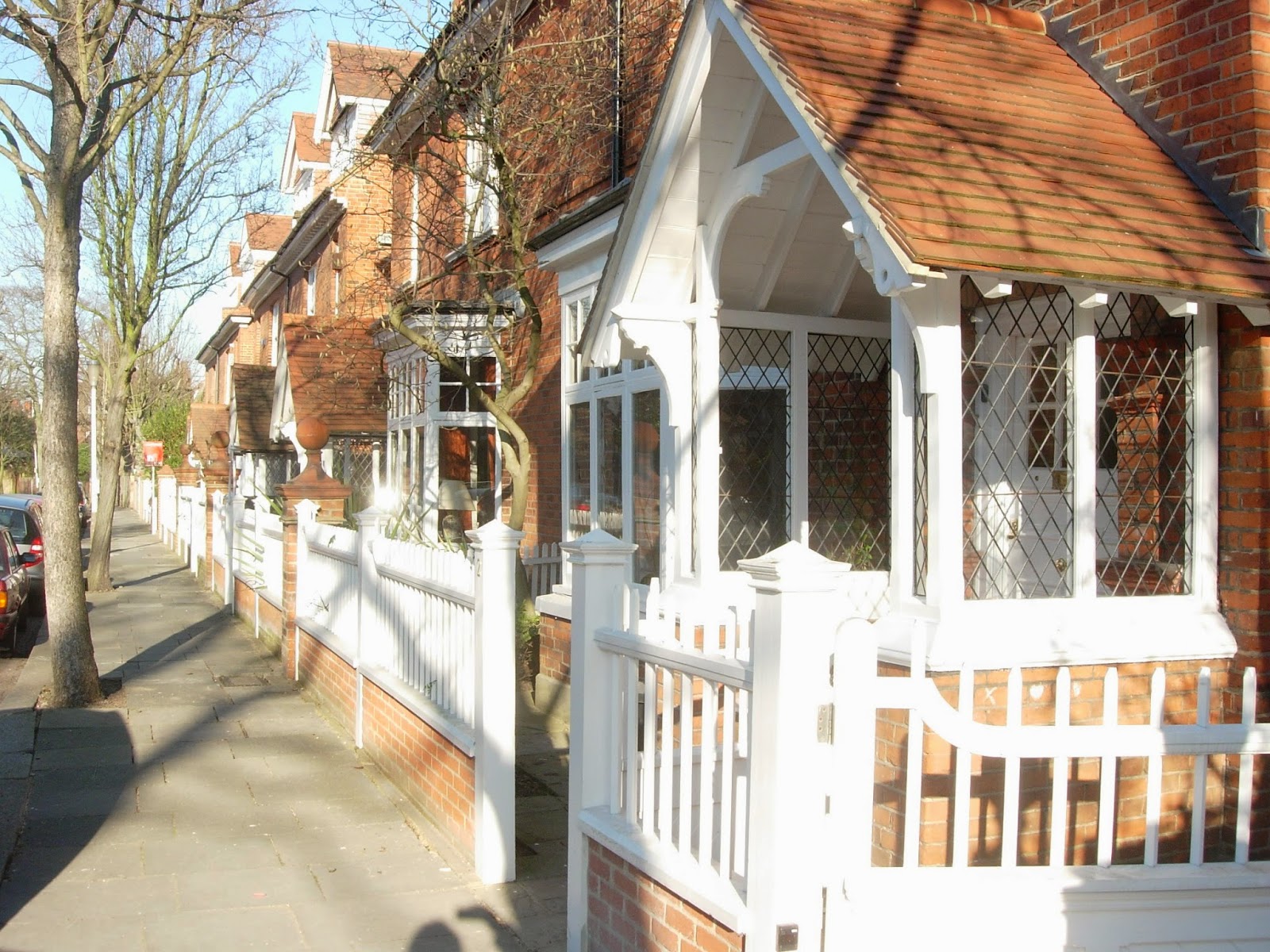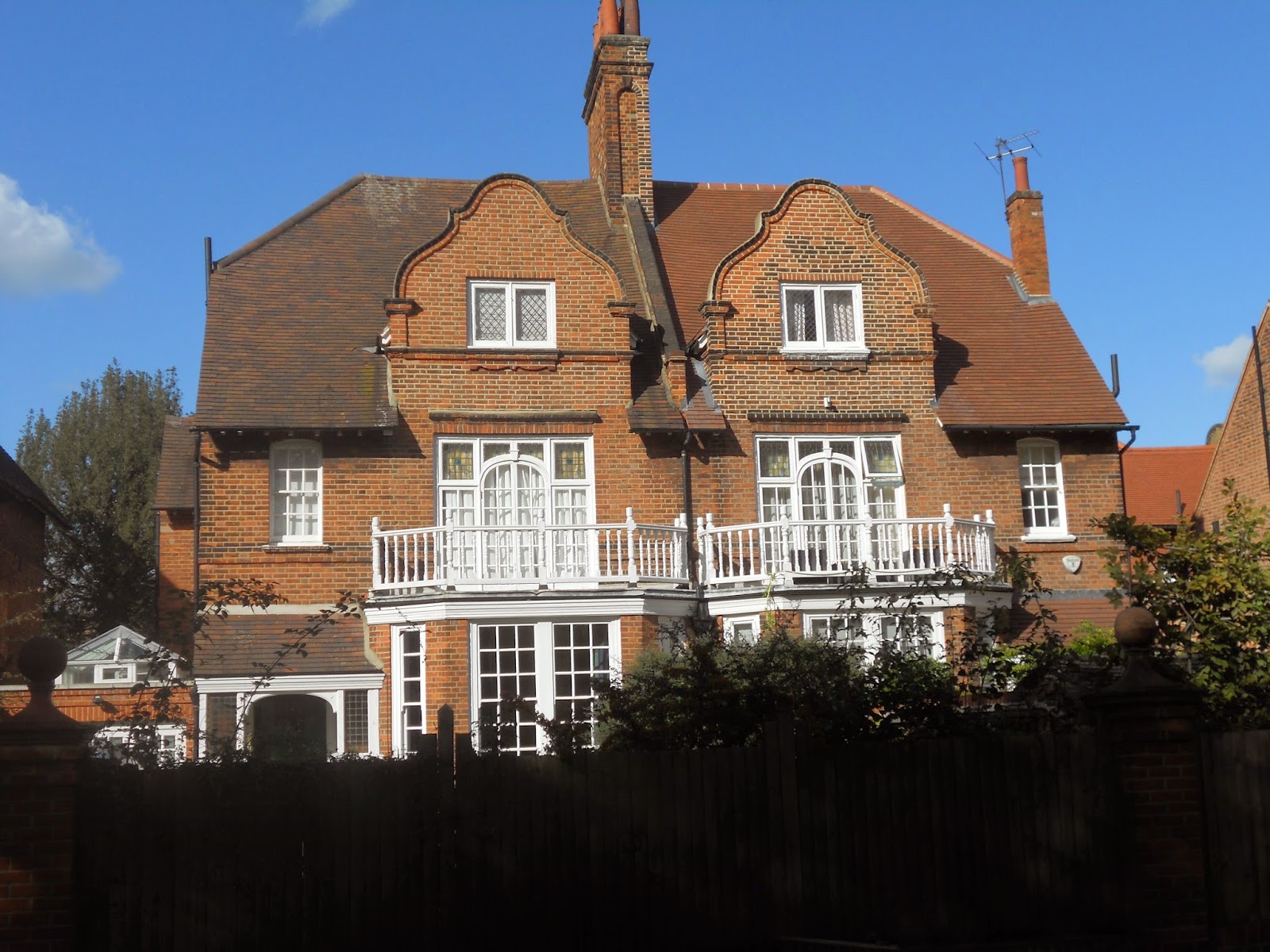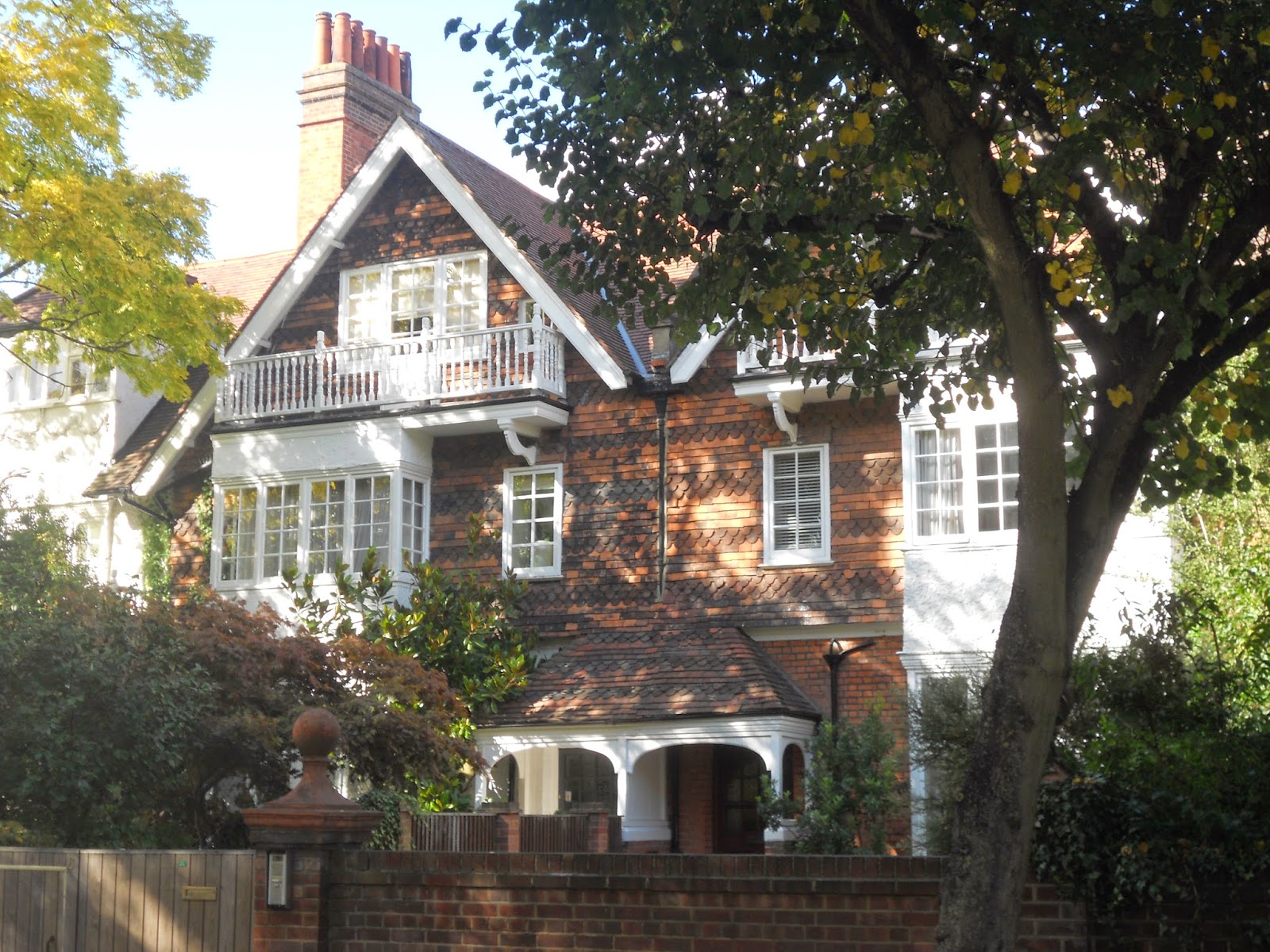Jane Jacobs attacked the Garden City movement when she stated that “its
prescription for saving the city was to do the city in.” Was this criticism
justified? Well, the answer is surely yes and no. Firstly, the original Garden
City movement was an attempt to deal with
the growth of existing cities by proposing satellite communities. The size of
existing cities would be limited by green belts. These would help define a city’s size, maintain a balance between city and
country and by forcing new developments into existing sites in a city act as a catalyst for urban regeneration.
The idea of
satellites was basically an offshoot of its concern about the issue of city size. Bedford Park, in west London, is often taken as a good example of the Garden City Movement though its proximity to central London ensures it should really be viewed as a neighbourhood of an existing city rather than a true satellite.
An important fact about Bedford Park is the date of its founding, 1875, which gives it some claim to be the origin of the Garden City Movement.
An important fact about Bedford Park is the date of its founding, 1875, which gives it some claim to be the origin of the Garden City Movement.
The development is often viewed as the work of Richard
Norman Shaw although Shaw was actually the second architect to be appointed by
the client, Jonathan Carr. Other architects who worked on the development
included Edward W Godwin, Maurice Adams and EJ May.
The development is centred around Acton Green Common and the
adjacent Turnham Green tube station.
Here are the non-residential uses such as parade of shops, church and pub.
Shaw was responsible
for buildings which compromise centre pieces of the development such as St
Michael & All Angels Church and the Tabard Pub.
Shops on The South Parade.
Priory Gardens
The houses by Shaw at 22 Woodstock Road are surprisingly not the best in the
development.
High density housing has been allowed on part of the site.
Richard Norman Shaw is remembered as one of the most
eclectic architects of the Nineteenth Century, responsible for buildings such
as New Scotland Yard on the Thames
Embankment and the less interesting Piccadilly
Hotel.
Much of the development has been designed in what became
known as The Queen Anne Style. It is
something of a historical curiosity that Richard Norman Shaw, a half-Irish, half-Scottish architect should
devote his career to this English, or to be more precise, Dutch style of
architecture.
Dutch motifs such as bell gables can be found throughout the
development. Many of these houses are not actually by Shaw himself.
Should this approach be regarded as something simply producing surface effects
rather than any deeper, spatial qualities, the sort of criticism sometimes
leveled at the work of John Nash? Well,
to give an informed answer to that question I would have to have seen more Shaw
interiors and I can only recall visiting the interior of two buildings by Shaw , Swan
House on Chelsea Embankment and The Royal Geographical Society in South
Kensington and both indeed provided a memorable
experience.
The development has provided a home for famous residents
such as W.B. Yeats, Camille Pissarro and, in more recent years, John Humphrys
of the BBC. It also appeared in the G.K. Chesterton novel The Man who was Thursday under the name Saffron Park.
It is true that the garden City movement as conceived by
Ebenezer Howard had little to say about existing cities and hence offers little
guidance on issues such as the regeneration of inner-city sites. It that sense, it cannot be said to be
a comprehensive theory of urban design. Its concern for issues such as city
size and satellites did evince an ability to think in regions, something often sadly amiss
from today’s thinking on urban design.














No comments:
Post a Comment